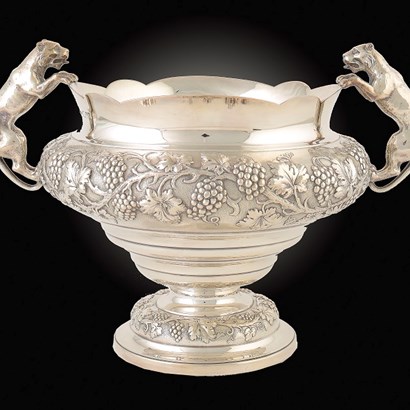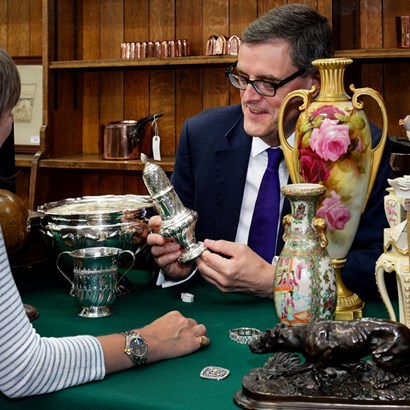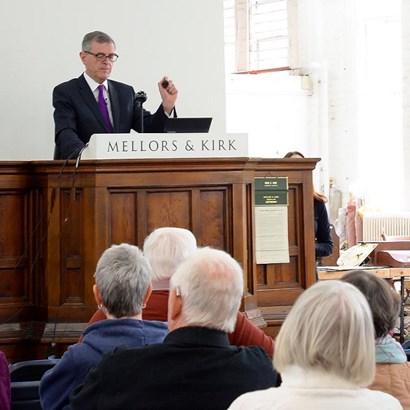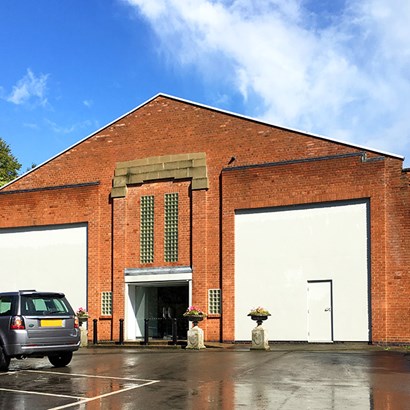Auction Insights
Winifred Nicholson
In what promises to be an exhibition of almost unsurpassed beauty, the Djanogly Gallery has gathered together nearly 70 of Winifred Nicholson’s paintings.
As anyone interested in Fine Art will tell you, there are some painters who just cannot be pigeon holed into a particular School or Movement. In oil paintings of great simplicity her landscapes and still lifes have a warmth and charm that is quite moving, but Nicholson who died in 1981 was anything but naïve.
Her work hangs in some of the most important museums and art galleries around the world but is not often sold because I believe people actually want to live with her pictures. Fortunately Mellors & Kirk has sold two in the recent past and for a few weeks they hung in Reception at The Auction House. More visitors enquired about them than any other picture, some of which were much more valuable, before or since. That is not exactly a piece of scientific research but it is nonetheless interesting. One of those paintings will be in the Djanogly’s exhibition.
Winifred Nicholson was born in Oxford in 1893, the eldest of a family of three. Her father was a Liberal MP and government minister and her mother was an aristocrat. Winifred painted from being a young teenager so it was no surprise when she married a fellow artist, a man who became the foremost abstract painter in Britain, Ben Nicholson (1894-1982). He was the son of Sir William Nicholson (1872-1949) the famous Newark-born painter and designer. The Nicholsons had lived in Newark for generations where they were successful agricultural engineers. The three Nicholson artists are thought by many to be the most influential and profoundly talented family of painters in the history of 20th century, or ‘Modern British’ art.
Winifred’s pictures were first exhibited in public in 1925. Soon she was also designing textiles for Alastair Morton’s Edinburgh Weavers and occasionally signed her work under a pseudonym. The dramatically different but stunning landscapes of Morocco, Greece and Cornwall, but especially Cumbria where she lived, were to be her lifelong inspiration.
At home at Brampton in Cumbria her pictures of pot plants on a windowsill and the hills and coastal scenery are unmistakably her ‘trademark’. One curator has called her pictures ‘Joyful’ and another has described them as ‘Music in Colour’. There is a lot in that but I think there is also another aspect to her art. Poetry is allied to music and painting in rhythm but in aesthetics. Her pictures are not ‘important’ an unfortunate term much used by art dealers in so much as their influence (such as Picasso’s Guernica) but they are poetic. What’s more, as she got older her work developed in a fascinating and highly unusual way. Sensing something of the secret, awe inspiring power of light as truth she used a prism to create an entirely new and original series of paintings. Examples are Palm (1980) and Crocus and Hepatica (1981) for which Mellors & Kirk achieved just over £13,000 and £20,000 respectively. I don’t think too much can be read into the difference between their prices because as so often happens everything depends on how people react on the day of the Sale. The buyers ended up with pictures that cost less than some people splash out on a designer handbag at auction.
Time, as it does, will tell and painters such as Nicholson, David Hockney (whose exhibition at Tate Britain opened on Thursday). Chris Ofili and L S Lowry are examples of modern or contemporary artists that explore new ways of painting their surroundings and people and whose work will still be appreciated long after that of so many over-hyped contemporary artists, many of whose work is quite frankly trash, is quietly forgotten.
Winifred Nicholson painted almost until the day she died. The insight she sought from the purest colour imaginable, that of the spectrum, reminds me of J M W Turner whose later highly atmospheric works were misunderstood by many. I wonder if Winifred was aware of his dying words ‘The Sun is God’?
Neil Walker and his co-curator Jovan Nicholson – who happens to be Winifred’s grandson – are to be congratulated on putting together this exhibition which includes many pictures not seen in public before. The last time Nicholson was shown was at the Tate Gallery in 1987, so this will be a ‘must see’ exhibition for lovers of 20th century British art from far beyond the East Midlands.
As if that isn’t enough there is still time to see the Djanogly’s Victor Pasmore exhibition. A pioneer of British abstract art in the mid 20th century, Pasmore was one of the tiny number of painters and architects to be appointed a Companion of Honour.
The exhibition, Winifred Nicholson: Liberation of Colour at the Djanogly Gallery runs from 4 March to 7 June and Victor Pasmore: Towards a New Reality ends on 19 February.
< Back to Auction Insights



